Flags of Countries that Start with T
How many countries beginning with T? There are a total of 12 countries starting with letter T among the 193 countries in the world:
- Taiwan
- Tajikistan
- Tanzania
- Thailand
- East Timor
- Togo
- Tonga
- Trinidad and Tobago
- Tunisia
- Turkey
- Turkmenistan
- Tuvalu
Turkey
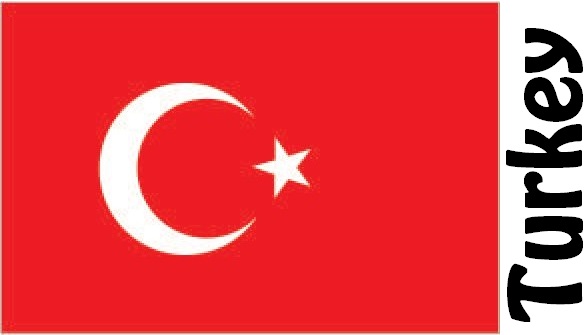
Turkey is a republic divided between Europe and Asia. Most of the country is located in SV Asia. The landscape consists of a central plateau surrounded by large mountain ranges in N and S. In NV there are lowlands and mountains. Thrace is separated from the rest of Turkey by the Bosphorus Strait.
There is subtropical Mediterranean climate on the coast of V. In the rest of the country there is temperate mainland climate. Earthquakes often occur.
The main natural resources are chromium, oil, copper, coal, iron ore, manganese, sulfur, bauxite, hydropower and agricultural land. In particular, cotton, tobacco, fruit, nuts, cereals, tea, sugar beet and vegetables are grown. Tourism is of great economic importance.
Turkey is a member of NATO and began negotiations on EU membership in 2005.
Country Facts – State Capital – Population Graph – Airports – Public Holidays – Embassies of Turkey – Embassies in Turkey – Import Regulations – Major Trade Partners – Major Imports – Major Exports
Trinidad and Tobago
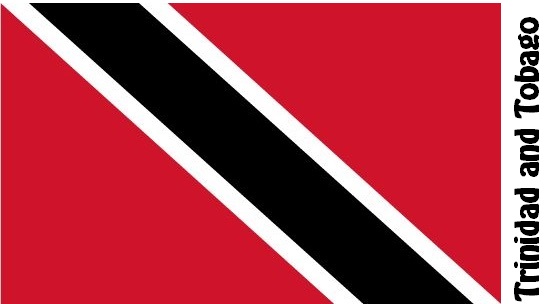
Trinidad and Tobago is a republic and island state in the Caribbean NE of Venezuela. The country includes the two islands of Trinidad and Tobago in the sea between the Caribbean and the Atlantic. The landscape on the largest island of Trinidad consists mostly of lowland with swampy areas, rainforests and grasslands as well as low mountains in N. The landscape of Tobago consists of low mountains, a coral limestone plain and coral reefs along the coast.
The climate is tropical with rainy season from June to December.
The country’s most important natural resources are natural gas, oil and asphalt from the large asphalt lake Pitch Lake in Trinidad.
Trinidad and Tobago became independent in 1962, and the country is especially known for the annual carnivals and calypsy music.
Country Facts – State Capital – Population Graph – Airports – Public Holidays – Embassies of Trinidad and Tobago – Embassies in Trinidad and Tobago – Import Regulations – Major Trade Partners – Major Imports – Major Exports
Tanzania
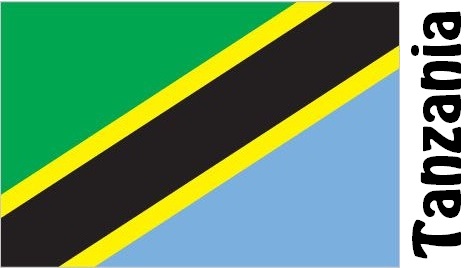
Tanzania is a republic in East Africa that includes Tanganyika and Zanzibar. The country lies out to the Indian Ocean. The landscape consists of a central plateau with savannah and steppes, highlands with rainforest, mountains and volcanoes, large lakes (Lake Victoria, Lake Tanganyika and Malawi), rivers and a coastal plain with mangroves and coral reefs. Zanzibar is a low coral island.
The climate is tropical. Centrally in the country, it is dry and in the highlands cool.
Tanzania has few minerals and diamonds and gold are mined. Agriculture is the most important profession. Coffee, cotton, tea, maize, cassava, millet, cassava, rice, sisal, bananas, cashews and sugar cane are mainly grown.
Formerly German and then English colony until 1961. The union between Tanganyika and Zanzibar was formed in 1964.
Country Facts – State Capital – Population Graph – Airports – Public Holidays – Embassies of Tanzania – Embassies in Tanzania – Import Regulations – Major Trade Partners – Major Imports – Major Exports
Togo

Togo is a Republic of the Gulf of Guinea in V-Africa. The landscape consists of savanna in the N, low mountains and valleys centrally as well as a low coastal plain with marshland, swamps and lagoons in S.
The climate is tropical with two rainy seasons. It is most dry in the north of the country.
Agriculture and the extraction of phosphate are fundamental to the country’s economy. More than half of the labor force is employed in agriculture. In particular, cotton, peanuts, cocoa and coffee are grown for export as well as yams, cassava, corn, millet, beans and rice for self-sufficiency.
Former German and most recently French colony. Togo became independent in 1960. Since then, the country has been ravaged by poverty, political instability and repeated coup attempts.
Country Facts – State Capital – Population Graph – Airports – Public Holidays – Embassies of Togo – Embassies in Togo – Import Regulations – Major Imports – Major Exports
Tunisia
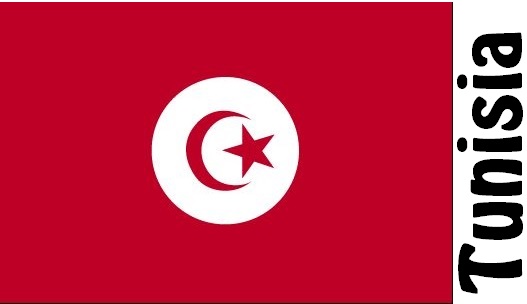
Tunisia is a republic in North Africa. The country borders Algeria in V, Libya in the SE and has coastlines to the Mediterranean in the N and NE. The landscape consists of mountains, forest and river valleys in the N, plateaus of steppes, swamps and salt lakes centrally in the country as well as desert, oases and salt lakes facing S.
Tunisia has subtropical climate. IS there are shrubs and desert.
Agriculture is an important profession, and citrus fruits, grapes, wheat, olives, barley, dates and vegetables are grown, among other things. Fishing, tourism and extraction of oil, phosphate, natural gas, lead, zinc, tin and iron are of great economic importance.
Tunisia is a former French colony. Independence in 1956. Often popular protests against corruption and widespread poverty.
Country Facts – State Capital – Population Graph – Airports – Public Holidays – Embassies of Tunisia – Embassies in Tunisia – Import Regulations – Major Trade Partners – Major Imports – Major Exports
Tajikistan
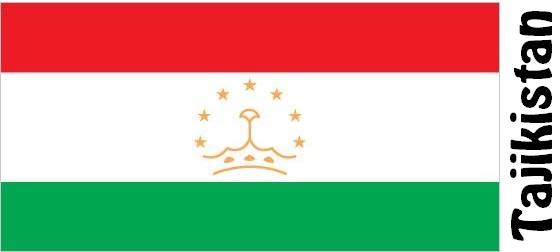
Tajikistan is a republic in Central Asia. The country is surrounded by Uzbekistan, China, Afghanistan and Kyrgyzstan. Tajikistan includes the Gorno-Badakhshan Autonomous Republic of the South. The landscape consists of high mountains, valleys, grassy hills and desert.
There are temperate mainland climates with large variations in temperature due to the elevation differences.
Agriculture employs half the population. Cotton, tobacco, cereals, fruits, vegetables and opium are grown. Big cattle hold. The country is rich in natural resources. Bauxite, natural gas, oil, coal, gold, iron and a number of other minerals are mined. Hydropower is a very important source of energy.
From 1929 to 1991, Tajikistan was a Soviet republic. The country has since been plagued by armed conflicts.
Country Facts – State Capital – Population Graph – Airports – Public Holidays – Embassies of Tajikistan – Embassies in Tajikistan – Import Regulations
Taiwan

Taiwan is a republic and island state of East Asia with coastlines to the South China Sea, the East China Sea and the Philippine Sea and the Pacific. The country includes the main island of Taiwan and some small islands. Taiwan’s landscape consists of mountains that slope steeply towards the coast of the island, and flat plains in V.
There is tropical monsoon climate in the country. Typhoons, earthquakes and cyclones occur.
Taiwan has few natural resources and industry is the largest and most important profession. In agriculture, rice, sugar cane, mushrooms, asparagus, sweet potatoes, tea, bananas and pineapple are grown.
Taiwan has undergone strong economic development and has become a very prosperous country. China does not recognize Taiwan as an independent state.
Country Facts – State Capital – Population Graph – Airports – Public Holidays – Import Regulations
Thailand
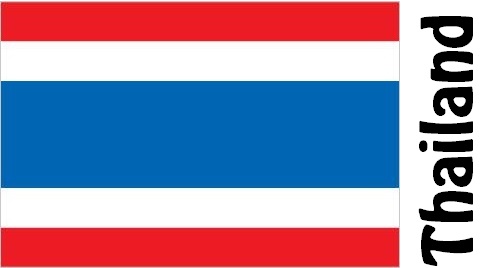
Thailand is a kingdom in SE Asia. Borders of Burma, Laos, Cambodia and Malaysia as well as coastlines to the Gulf of Thailand and the Andaman Sea. The landscape consists of mountains, plateaus and fertile plains on the Chao Phraya River and its foothills. IS is lush and mountainous with wide beaches.
There is tropical monsoon climate with rainy season from May to October.
The most important crops in agriculture are rice, rubber, cassava, sugar cane, cassava, coconuts, vegetables and fruit. Fish, tin and other minerals, oil and natural gas are some of the country’s most important natural resources. Tourism and industry are of great economic importance.
Thailand, as the only country in South Asia, has not been a European colony. Until 1939 the country was called Siam.
Country Facts – State Capital – Population Graph – Airports – Public Holidays – Embassies of Thailand – Embassies in Thailand – Import Regulations – Major Trade Partners – Major Imports – Major Exports
Turkmenistan
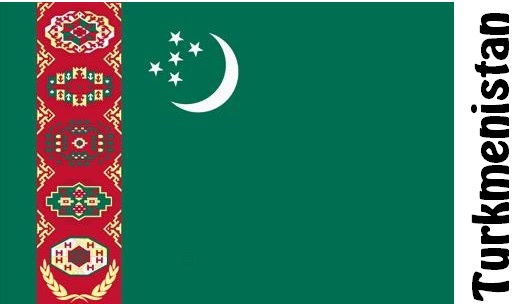
Turkmenistan is a republic in western Central Asia. The country is a Caspian inland state with borders to Kazakhstan, Uzbekistan, Afghanistan and Iran. The majority of the country is made up of the Karakum desert. There are low mountains in V, the mountain range Kopet Dag in S along the border with Iran, the river Amu Darja in the NE and a low plain on the Caspian Sea in V.
There is dry, temperate mainland climate with cold winters and very hot summers.
The most important natural resources are oil, natural gas, minerals and salts. Agriculture is irrigated and cotton is mainly grown for export as well as maize, melons, grapes and wheat. The sheep team is large.
Turkmenistan was a Soviet republic from 1924 until the dissolution of the Soviet Union in 1991.
Country Facts – State Capital – Population Graph – Airports – Public Holidays – Embassies of Turkmenistan – Embassies in Turkmenistan – Import Regulations – Major Imports – Major Exports
Tonga

Tonga is a kingdom in Oceania. The country consists of about 170 islands in the southern Pacific. The islands form parallel rows and divide in the Tongatapu Islands furthest to the S, the Ha’apai Islands in the middle and Vava’u Island in the N as well as several rows of low coral islands in the Island and high volcanic islands in the V.
The climate is tropical. Cyclones may occur.
Tourism, fishing and agriculture are the most important occupations in the islands. Watermelons, pumpkins, yams, taro, root vegetables, squash, coconuts, bananas and vanilla are grown.
Tonga has constitutional monarchy within The Commonwealth.
Country Facts – State Capital – Population Graph – Airports – Public Holidays – Import Regulations
Tuvalu

Tuvalu is a kingdom and an island state in Oceania. The country consists of nine low atolls and coral islands, which together make up about 129 small islands and islets in the southern Pacific Ocean. There are lagoons on several of the islands.
The climate is tropical with rainy season from November to March. Floods and sea rises due to climate change can have serious consequences for the low island population.
The country’s only significant natural resource is fish. Agriculture is mainly conducted for self-sufficiency. Sales of stamps and fishing licenses are important to the economy.
Tuvalu became independent in 1978 and the country is a member of The Commonwealth. Tuvalu is one of the smallest countries in the world and very poor.
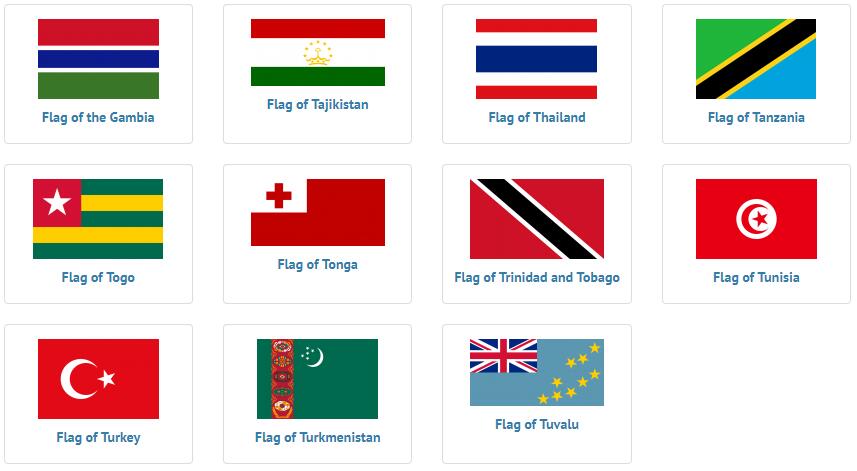
Country Facts – State Capital – Population Graph – Airports – Public Holidays – Import Regulations













































